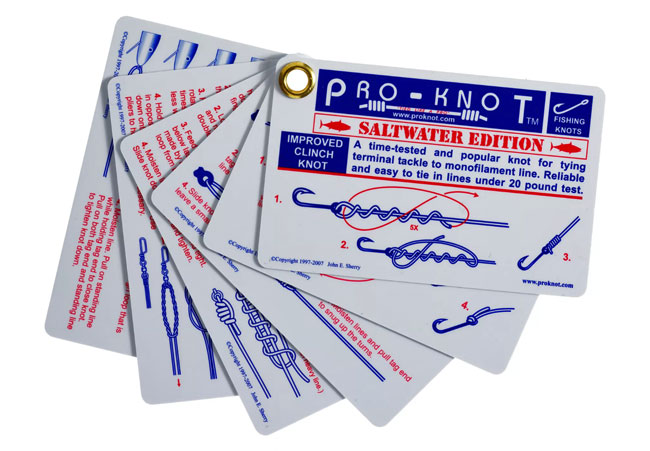- Home
- Knots and Crimping
- Leader Knots
The Two Leader Knots You Need to Know
Just two leader knots? Yes, there're are plenty more but two is all you need - one for joining lines of different materials and diameters, and another for similar line types and diameters
There are two basic types of leader - one is a strong shock leader, required to withstand the high shock loads of casting. This often involves connecting lines of diffent types and diameters, such as braid mainline to a mono or fluorocarbon leader.
The other is a
hard-wearing leader required to resist abrasion or the teeth of
predatory fish, such as for a mono mainline to a heavier mono leader.
Safe, reliable connections for these situations are described here.
Connecting Different Line Types and Diameters
For example:~
- connecting a single-strand wire leader to a nylon monofilament line, or
- connecting a nylon monofilament or a fluorocarbon leader to a much thinner dyneema or spectra braid main line
The Albright Special Knot

Stage 1
First, double back the end of the single strand wire leader and thread the mono through the eye produced.

Stage 2
Next, start whipping back the mono over itself and the leader.

Stage 3
Then, make about ten turns before tucking the tag end of the mono through the loop such that it emerges on the same side as it entered.

Stage 4
Finally, lubricate with saliva before smoothly pulling the knot up tight.
Trim both ends, and that's it - a knot for connecting different line types and diameters
Connecting Lines of Similar Types and Diameters
For example:~
- connecting a low-visibility fluorocarbon leader to a more visible nylon monofilament main line, or
- connecting a heavier nylon monofilament shock leader to a lighter mono main line
Two Uni-Knots tied Back-to-Back

Stage 1
First, lay the two lines to be connected alongside and form a loop as shown here.

Stage 2
Now make at least four turns (more for light lines) around both strands and through the loop. Wet the knot with saliva and start tightening it by first pulling on the tag end in the direction of the arrow.

Stage 3
Then, with the knot now well consolidated, snip the ends off close and pull on the two lines to slide the two knots towards each other.

Stage 4
And that's it, the finished knot for joining a nylon monofilament main line to a fluorocarbon leader.
Recent Articles
-
Sea Fishing Rods and Reels Must Be Compatible for a Balanced Outfit
Mar 08, 21 08:30 AM
A quality reel fitted to a quality rod doesn't necessarily make it a quality outfit. Your fishing rods and reels have to be properly matched if you're to get the best out of them, and here’s how -
Essential Lure Fishing Tips That All Saltwater Anglers Should Know
Mar 08, 21 04:51 AM
Which single lure fishing tip applies to trolling, jigging, baitcasting, spinning, fly fishing and any other branch of lure fishing? Well, it is the one at the top of this list -
Vital Jig Fishing Tips That You Really Cannot Afford To Miss!
Mar 07, 21 10:20 AM
Essential jig fishing tips to help you select the right lure for successful jig fishing, together with the techniques required to get the most out of your jig fishing outfit



















New! Comments
Have your say about what you've just read! Leave me a comment in the box below.